On the territory of the Russian Federation, every business entity, regardless of the organizational and legal form, is obliged to submit a report on the results of its activities to the regulatory authorities. The information reflected in the documents, as a rule, is of a financial and economic nature, but a number of positions are used to collect and analyze statistical data. For example, the average number of employees. This calculated indicator is of great importance for the enterprise at all stages of its functioning.
Definition
The average number of employees is an indicator of the number of employees who actually performed their job duties at the enterprise during a certain reporting period. This information is transmitted to the relevant department of the tax inspectorate, the FSS, statistical authorities.
For internal control and analysis of the effectiveness of personnel policy, such an indicator as the average headcount is of great practical importance. When considering its dynamics, connection with indicators of wages and staff turnover rates, the manager can evaluate the economic profitability of personnel management.
Importance for the enterprise
In accordance with the Legislation of the Russian Federation (FZ 268), the Tax Code (Article 80, paragraph 3), Rosstat resolutions (No. 69), information on the average number of employees is provided in the approved manner to the tax inspectorate at the place of actual registration of the enterprise annually. Based on this indicator, the company can receive the provided tax benefits (VAT, income, land, property tax), choose a simpler accounting and reporting system. This is especially true for individual entrepreneurs and small businesses, which are not profitable to maintain large staffs of the administrative and financial department. The report on the average headcount, timely provided to the fiscal authorities, gives the organization the opportunity to choose the form of reporting (electronic or written). In the FSS, this value necessarily appears in each quarterly and final document. For statistical bodies, the average number of employees of each enterprise is necessary as an analyzed indicator on a regional, country scale.
Report
Information on the average number of employees is transferred to the tax, statistical authorities and the FSS, regardless of the number of personnel involved. If an individual entrepreneur is the only one in the state, then he must submit a zero report for each year worked in this capacity. At large enterprises, the average headcount is calculated by the chief accountant or head of the personnel department, who is responsible for the authenticity of the information and their timely submission. When using an automated accounting system (accounting, personnel) of working time, the calculation is greatly simplified.
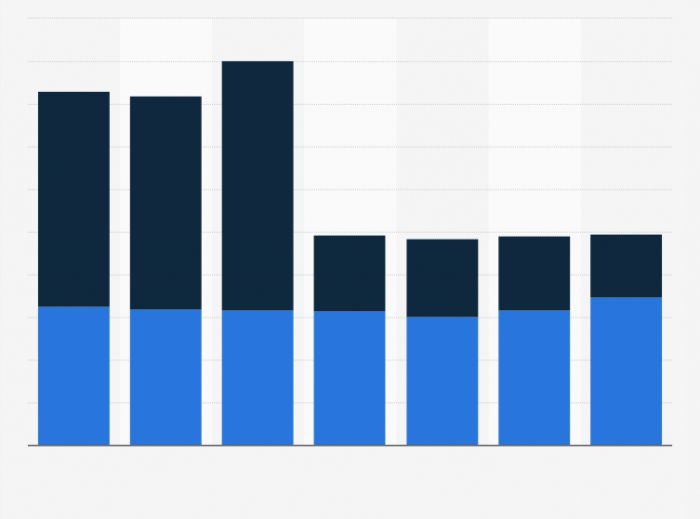
Timing
Before submitting the main forms of annual reporting to the tax office, a certificate of the average number of personnel for the past period is provided. It is important to respect the submission deadlines. Penalties for an employee and a legal entity are not so high in monetary terms, but without this report, the company may lose tax benefits or the right to switch to a simplified form of taxation. The reporting period, as a rule, is a calendar year, during which the enterprise independently determines such an indicator as the average headcount. The calculation is made monthly, quarterly. Information must be provided by January 20 of each year following the reporting year. Reorganized or newly created enterprises submit information on the average headcount one month after the start of activity, registration for the first time, then the calculation is made annually.
Basis for calculation
Each enterprise maintains a daily record of the time worked by employees, it is recorded on paper or electronic media. The average headcount is calculated on the basis of the following internal documents of the organization:

Each document used for calculation must be of a unified form, contain the signatures of persons responsible for the information reflected in it. The forms of primary accounting registers are approved by the Decrees of Rosstat.
Calculation
The Federal Statistics Service has developed a unified form of the document, which is submitted to the Federal Tax Service at the place of registration of the reporting enterprise. The FSS has its own forms, which the taxpayer is required to complete on a quarterly basis. At the same time, the data in each report must be identical and correspond to real indicators.

The average headcount, the value of which is calculated according to a single formula approved by the provisions of Rosstat, is determined monthly by the accounting department of the enterprise. To determine the quarterly figure, the values are summed up and divided by 3. The annual figure is defined as the sum of the monthly values divided by 12. When calculating the number of employees, several important factors must be taken into account that affect and distort the figure. More carefully, it is necessary to approach the composition of the categories of workers taken into account, i.e., to piece workers, employees on a rolling schedule, freelance units. From a mathematical point of view, such an indicator as the number of personnel should be an integer, so accounting rules are applied to round it up.
Categories to Consider
The calculation of the values of the average number of employees is carried out on the basis of unified forms of primary documents (time sheet). When determining the indicator, the following categories of employees are taken into account:
- Workers who actually worked the allotted time.
- Those who did not appear at the workplace for a good reason (vacation, day off, business trip, performance of public or state duties).
- New employees on probation.
- Workers who did not appear due to illness (if the relevant document is provided).
- Employees working remotely.
- Employees sent to separate divisions or branches of the organization with the possibility of receiving wages at their main place of work.
- Truants.
- Seasonal workers.
- Managers or owners of the enterprise receiving s / n.
- Employees sent to full retraining courses or advanced training courses with the condition of maintaining full or partial remuneration.
- Part-time workers.
- Employees who are on forced leave due to downtime.

Categories not taken into account
When calculating the average headcount, the indicator does not include the following employees:
- Applicants for resignation.
- Being on the next vacation with the subsequent (signed by the head) dismissal.
- Freelancers recruited under civil law contracts.
- Employees on business trips abroad.
- Part-timers.
- Women on maternity leave.
- Citizens who are not tax residents of the Russian Federation.
- Women on paid parental leave (up to 1.5 or unpaid up to 3 years).
- Owners, founders of the enterprise who do not receive wages.
- Employees recruited under special contracts with government agencies (military personnel, convicts).
- Seconded employees who receive wages in another division (at their main place of work).
Monthly rate

The calculation of the average number of employees is made for a certain period of time. To establish a monthly indicator, the following formula is used: AMS / number of calendar days. The hours worked are summed up from 01 to 30 (31) of each month for the relevant categories of workers, the resulting value includes non-working (weekends, holidays) days. At the same time, the average headcount for them is determined as similar to the previous working day. The calendar number of days corresponds to the month in which the calculation is made. The category of employees working part-time (disabled, nursing mothers under 18 years of age, categories with difficult and harmful working conditions) is calculated separately, according to the actual values in the time sheet. The formula is applied as follows:
- number of hours worked / day length (for this category) / number of working days in the current month. The resulting value is added to the main indicator.
Annual rate
Based on the calculated data of the personnel department or accounting department at the end of the reporting period, the final value of the average number of employees is determined. It is determined by a simple formula: the sum of monthly indicators (data for January + ... April + .... July + ...) / 12 months. At the same time, enterprises that started work or reorganized in the middle of the year use the same indicator calculation scheme.

Report Form
When submitting information to the tax office in terms of "average headcount", the form can be filled out electronically. To do this, a free program for all legal entities has been created on the website of each IFTS, which contains all the necessary details of the report. If the document is submitted in writing, it must be made in two copies. The first one is transferred to the inspection officer for processing, a copy of the report remains with the taxpayer with a corresponding note on the fact and date of receipt. The form can be purchased at any branch of the tax office, the completed document is submitted at the place of registration of a legal entity as a taxpayer. The main requirements for the completed report are: the absence of corrections, blots, filling in all the details of the form, the signature of the responsible person, the head of the enterprise and the seal. The form has an approved form KND 1110018. The report on the number of personnel (average headcount) has the following mandatory fields for the taxpayer to complete:
- Name of the organization, individual entrepreneur (full, in accordance with the constituent documents).
- TIN of the taxpayer.
- Number (code) of the IFTS subdivision.
- Number of pages (for this report - 001).
- Tax registration code (reason).
- Annual indicator of the number of workers.
- Full name of the person responsible for submitting the report.
- Date of submission of information.
- Imprint of the organization's seal (if any).

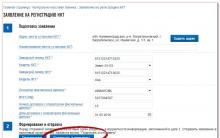
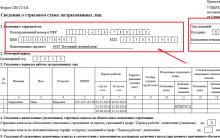

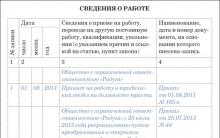
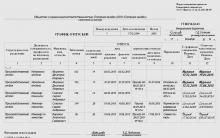





How to issue a power of attorney to represent the interests of an LLC to an individual?
How to apply for an IP: step by step instructions
Form of power of attorney to receive goods or material assets
The deadline for registering an individual entrepreneur in the tax
Business plan for a law firm: an example with calculations legal support for a business